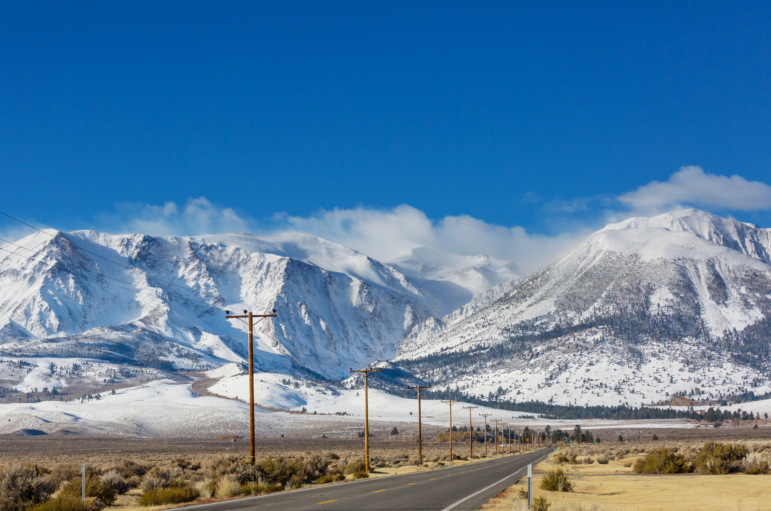California faced one of the wettest winters in 2023, pummeled by over a dozen atmospheric river storms in the first quarter of this year alone. These storms were responsible for several deaths, widespread flooding, and levee breaches. The record snowpack atop the Sierra Nevada is also a direct result of the historic storms that dropped snow across the state.
After three of California’s driest years, the storms brought relief to our state’s water supplies. So much so that Governor Newsom rolled back emergency drought restrictions that were put in place years ago. But California faces long-term challenges as the climate continues to warm and the snowpack begins to melt.

Kamchatka from Getty Images
The Sierra Nevada snowpack
As of mid-May, the southern Sierra held three times as much snow as it normally does in May. In fact, when the snowpack hit its peak in April, it held about 40 million acre-feet of water, making it the deepest snowpack in 70 years. That’s almost the capacity of all the state’s reservoirs combined!
At its current melting rate, the runoff has been refilling Tulare Lake and flooding thousands of acres of farmlands in the Central Valley. The snowmelt is expected to reach peak melting rates sometime in the next month.

georgeclerk from Getty Images
Warming weather
Flooding in the Central Valley has serious environmental repercussions. It poses a threat to livelihoods and food security with excessive water inundating farmlands, damaging crops, and disrupting irrigation systems. The aftermath can have long-lasting consequences for farmers, agricultural workers, and the economy.
Excess water runoff carries pollutants and agricultural chemicals into rivers and streams, affecting ecosystems and water quality. It disrupts natural habitats, endangering wildlife populations and compromising the balance of the region’s biodiversity.

Kamchatka from Getty Images
A wake-up call
The historic Sierra snowpack melting and the subsequent flooding of the Central Valley should serve as a wake-up call to take quick and decisive action to address climate change. The effects of the climate crisis are not limited to the distant future. They are happening right now. Urgent steps must be taken to reduce emissions, transition to renewable energy sources, and implement sustainable agricultural practices.
The moment we are facing underscores the need for immediate action to protect vulnerable regions and build resilience in the face of the climate crisis. By recognizing the urgency of the situation and working together, we can prevent climate catastrophe and create a sustainable future for generations to come.
Share this blog!
Now you can find out with our 2024 California Environmental Scorecard! Use it to see how California’s leadership scored, how many legislators take dirty oil money, and much more.
Read more blogs
Sources
- California’s Snowpack is Now One of the Largest Ever, Bringing Drought Relief, Flooding Concerns
- California’s epic snowpack is melting. Here’s what to expect
- Governor Newsom Signs Executive Order to Support Ongoing Central Valley Flood Response
- From the air, scientists map California’s vast snowpack
- San Joaquin Valley farmers bolster defenses for an epic Sierra snowmelt



